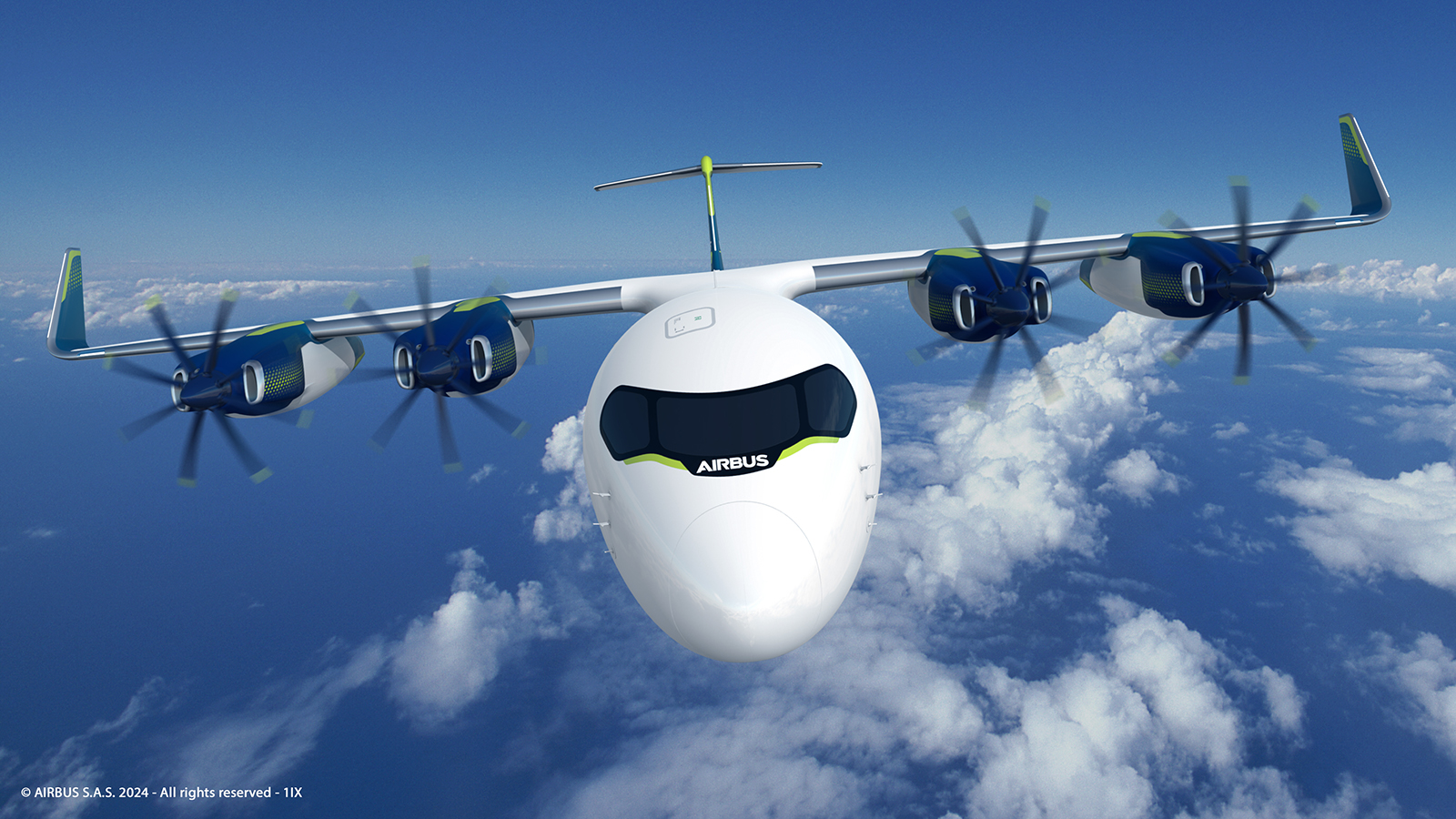Airbus Advances Hydrogen-Electric Engine Technology for Future ZEROe Airliner
Key Ideas
- Airbus plans a 2027 ground test of hydrogen-electric engine components for its ZEROe airliner, aiming for passenger flights with zero emissions and extended range.
- The chosen hydrogen-electric design with four engines beat out other concepts, offering environmental benefits and cost savings, but entry-to-service may be delayed to 2040-2045 due to hydrogen supply network development.
- Engineers are working to optimize engine power, manage fuel cell heat, and control power during flight, facing challenges in transitioning industrial components to aviation standards and ensuring compact, lightweight designs.
- Innovations include using liquid hydrogen for lighter, vacuum-insulated tanks, and developing smaller, lighter engine components made of advanced materials to enhance performance and efficiency.
Airbus has selected a hydrogen-electric design with four engines for its ZEROe airliner project, aiming to conduct a ground test in 2027 before progressing to passenger flights. The concept includes fuel cells converting liquid hydrogen to electricity for propulsion, aiming to eliminate emissions and reduce atmospheric warming factors. While the initial target for entry-to-service was 2035, delays in establishing a global hydrogen supply network have shifted the expected debut to between 2040 and 2045.
Engineers are currently focused on enhancing engine power, managing fuel cell heat, and optimizing software control for flight operations. Challenges include adapting industrial components to aircraft standards, ensuring lightweight and compact designs, and transitioning to cryogenic liquid hydrogen for improved efficiency. Upcoming tasks involve replacing off-the-shelf components with aviation-specific materials, such as advanced fuel cells and motors. Moreover, the use of double-walled, vacuum-insulated tanks for liquid hydrogen storage is being explored to reduce weight and enhance performance.
The transition to liquid hydrogen offers advantages over gaseous fuel, including lighter tank construction and improved efficiency. By utilizing aluminum alloys and carbon-reinforced plastics for tank and piping materials, Airbus aims to optimize the engine's overall design. While these advancements are new to aerospace applications, they have shown success in other industries, signaling a promising future for hydrogen-electric propulsion in commercial aviation.
Topics
Power
Aviation Industry
Sustainability
Future Transportation
Aircraft Design
Technology Development
Engineering Challenges
Latest News
